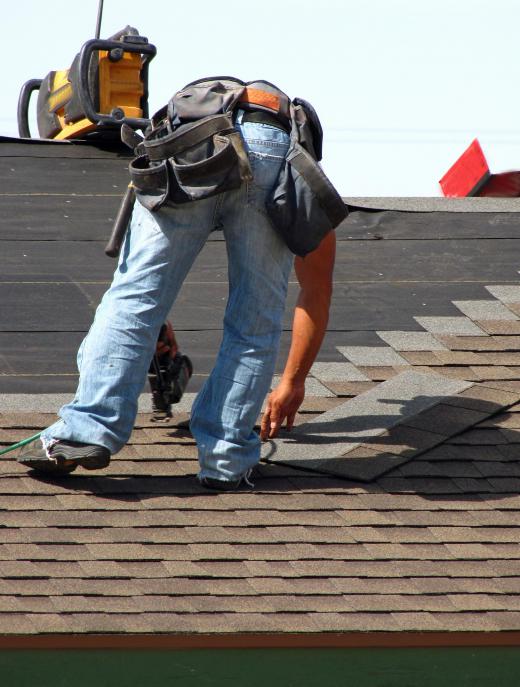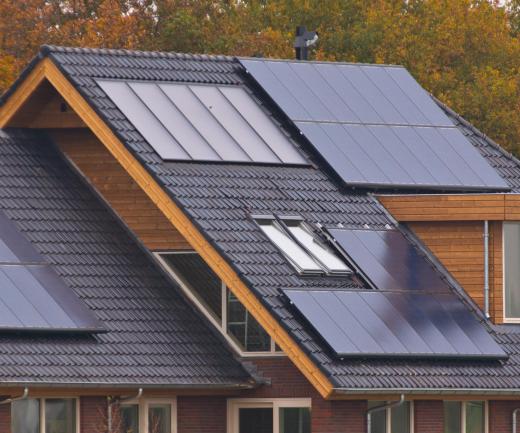Photovoltaic shingles are roof shingles coated with photovoltaic cells made of amorphous silicon. Photovoltaic materials and devices convert light into electricity. The energy-efficient shingles look like conventional asphalt roof shingles, but generate solar electricity by absorbing sunlight into their solar cells. A solar cell is made up of semiconductor layers where electrons are freed and an electric current is created. Heat from the sun bonds the shingles together to form a seal that is weather resistant, making photovoltaic shingles longer lasting than traditional roofing materials.
Photovoltaic shingles are much more costly than asphalt or other types of shingle materials, but high weather resistance and the fact that they generate electricity can make them attractive to homeowners and commercial and residential builders. Prices have decreased over the years because of advances in photovoltaic and solar technologies, improved manufacturing techniques, and more efficient use of materials. To diminish costs, some building and homeowners will integrate photovoltaic shingles with conventional shingles for a seamless appearance, taking advantage of a particularly sunny spot on a rooftop. Climate, location, roof orientation, and slope are the main factors considered when purchasing photovoltaic shingles.

Photovoltaic roofing materials are most economical in areas where utility companies charge higher rates for peak daytime usage. The high cost of photovoltaic shingles can also make economic sense in sunny climates with high electricity bills. The downside of using photovoltaic materials sometimes stems from comments of residents who live in cloudy and cool regions.

Some experts claim that in less sunny parts of the world, residential photovoltaic roofing will never be smart economically. Japan somewhat disproves this claim by, historically, being one of the highest users of residential photovoltaic roofing products. Even though Japan's skies are less sunny than California's in the United States, high utility costs and government incentives have made photovolatics a popular choice in that country. Additionally, home photovoltaics may be incapable of reaching the financial feasibility of larger commercial photovoltaic applications.

Photovoltaic technology, also called PV or solar electric, can provide electricity in a clean and reliable way. First used around 1890, photovoltaic cells are made of semiconductor materials and come in many shapes and sizes. When connected together, they become PV modules, which can be combined to form PV arrays.
An array's modules are a major part of a PV system. The size of an array is determined by power demands. Small common consumer items such as wristwatches and calculators are run by simple PV systems.

